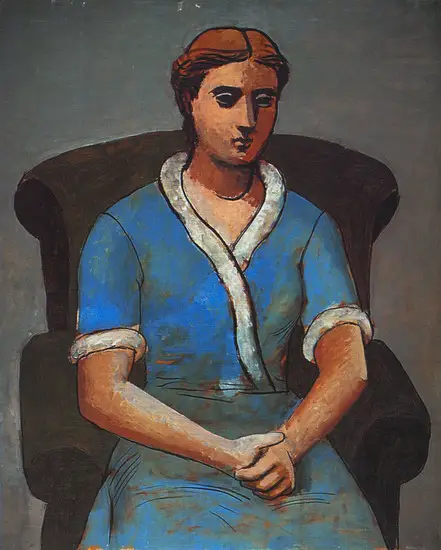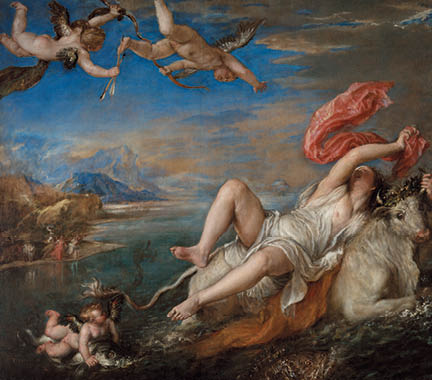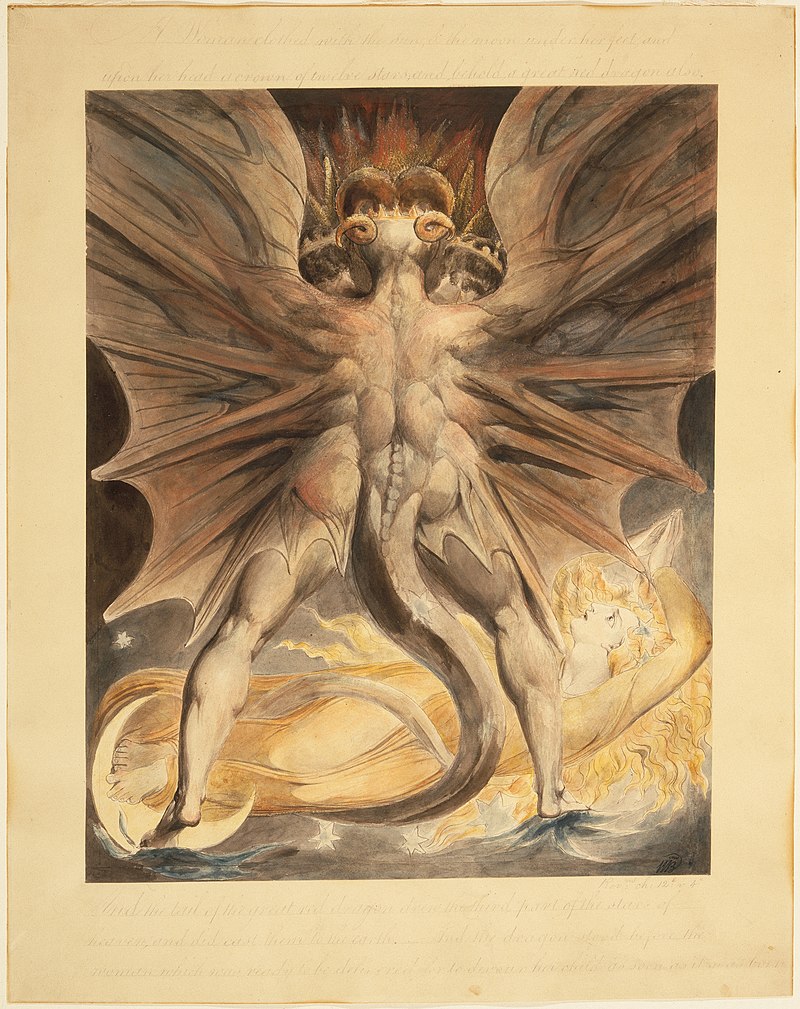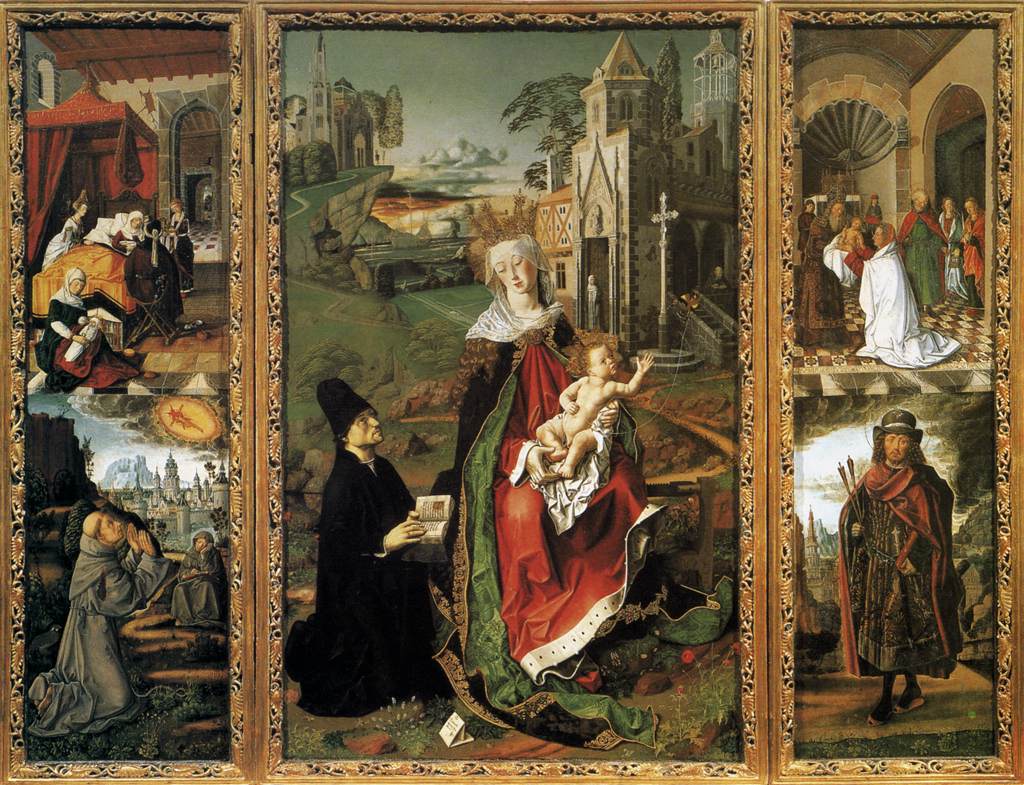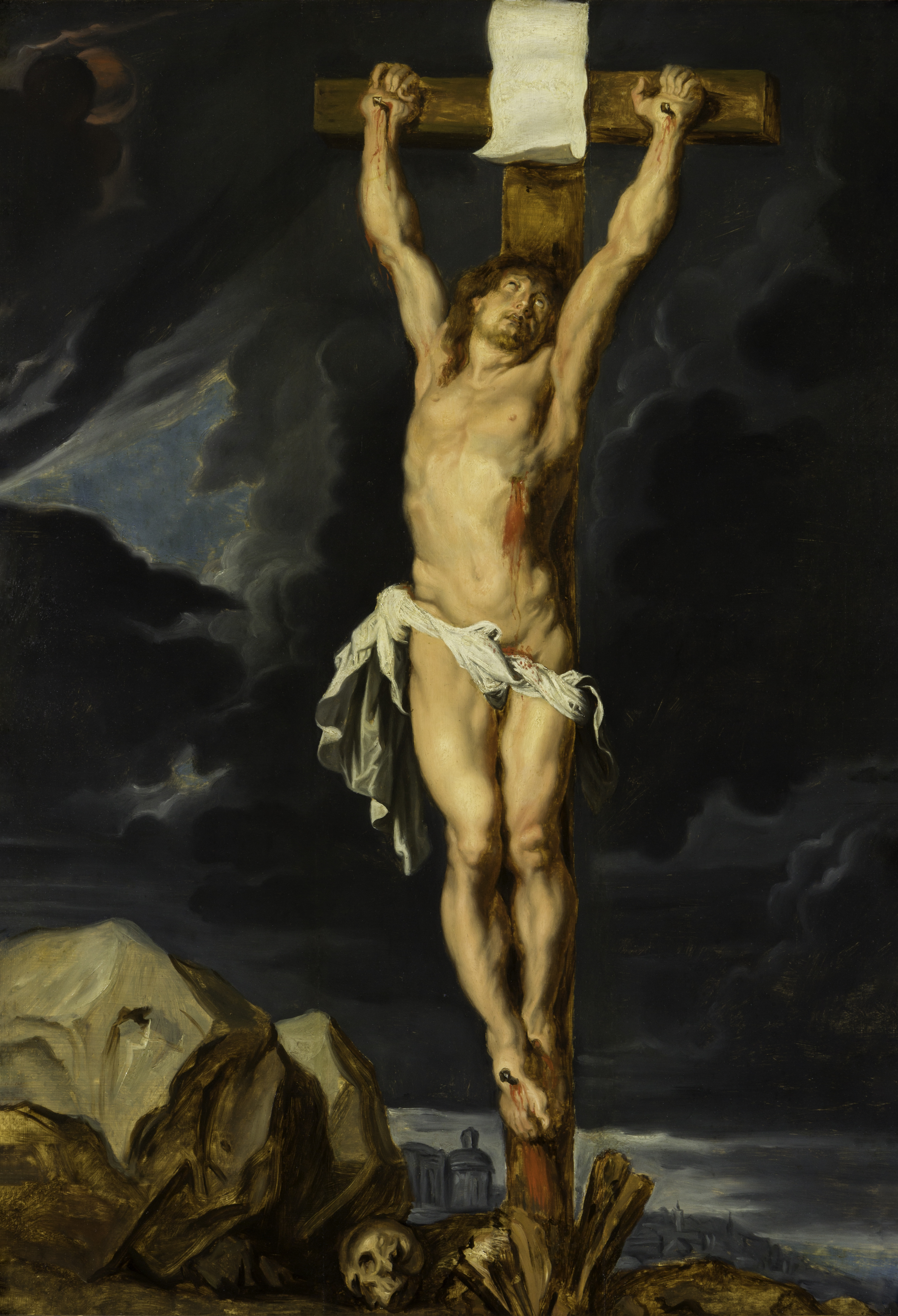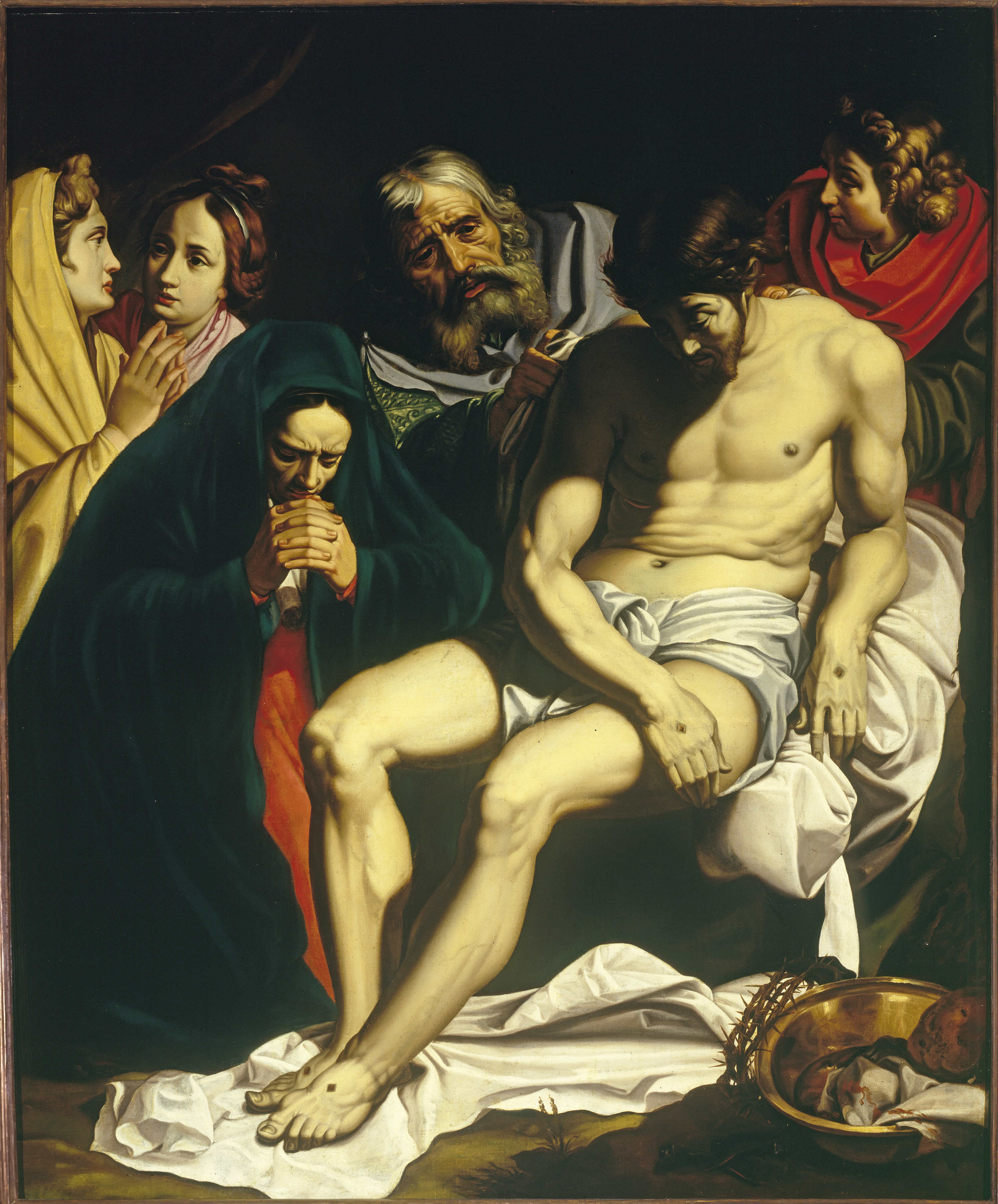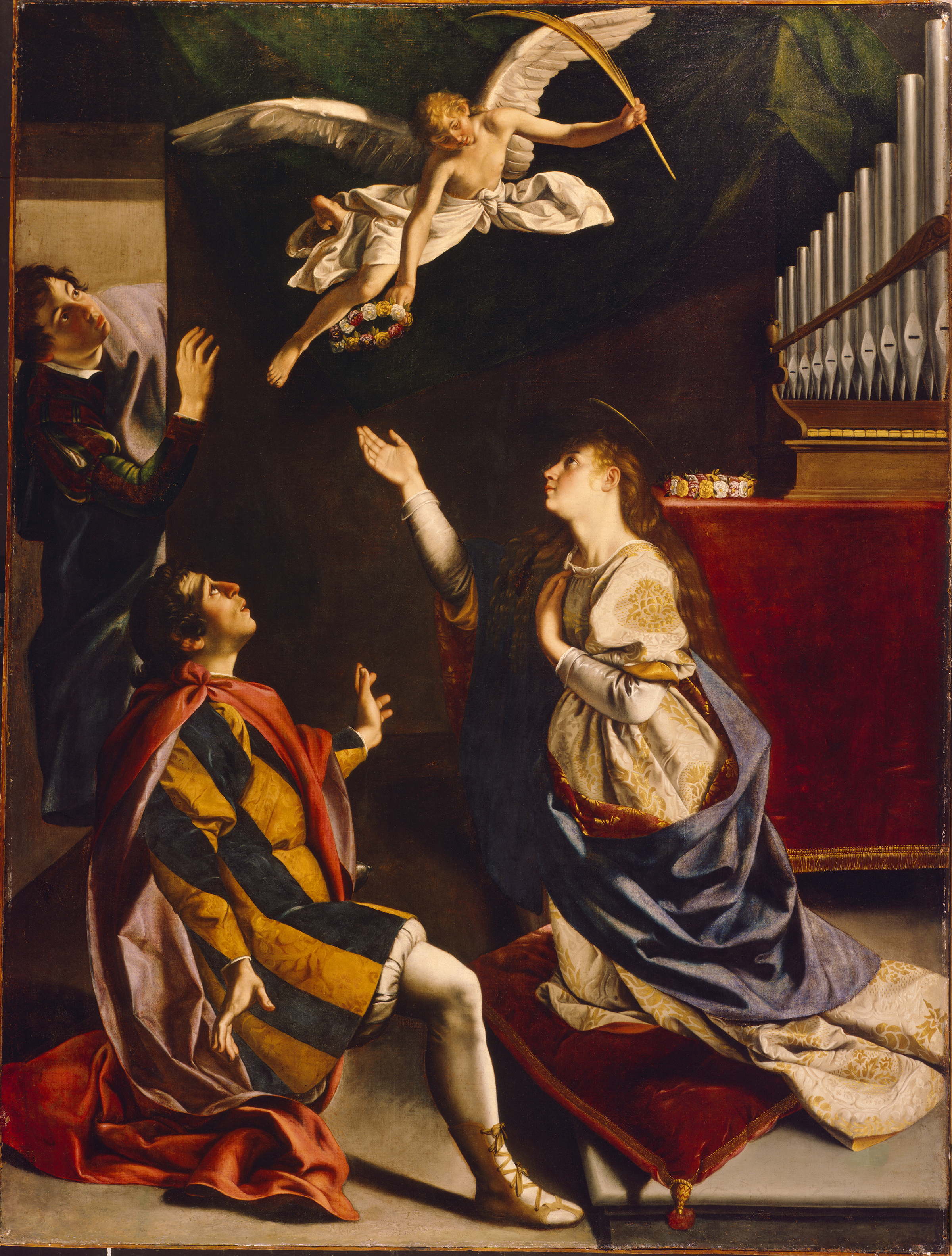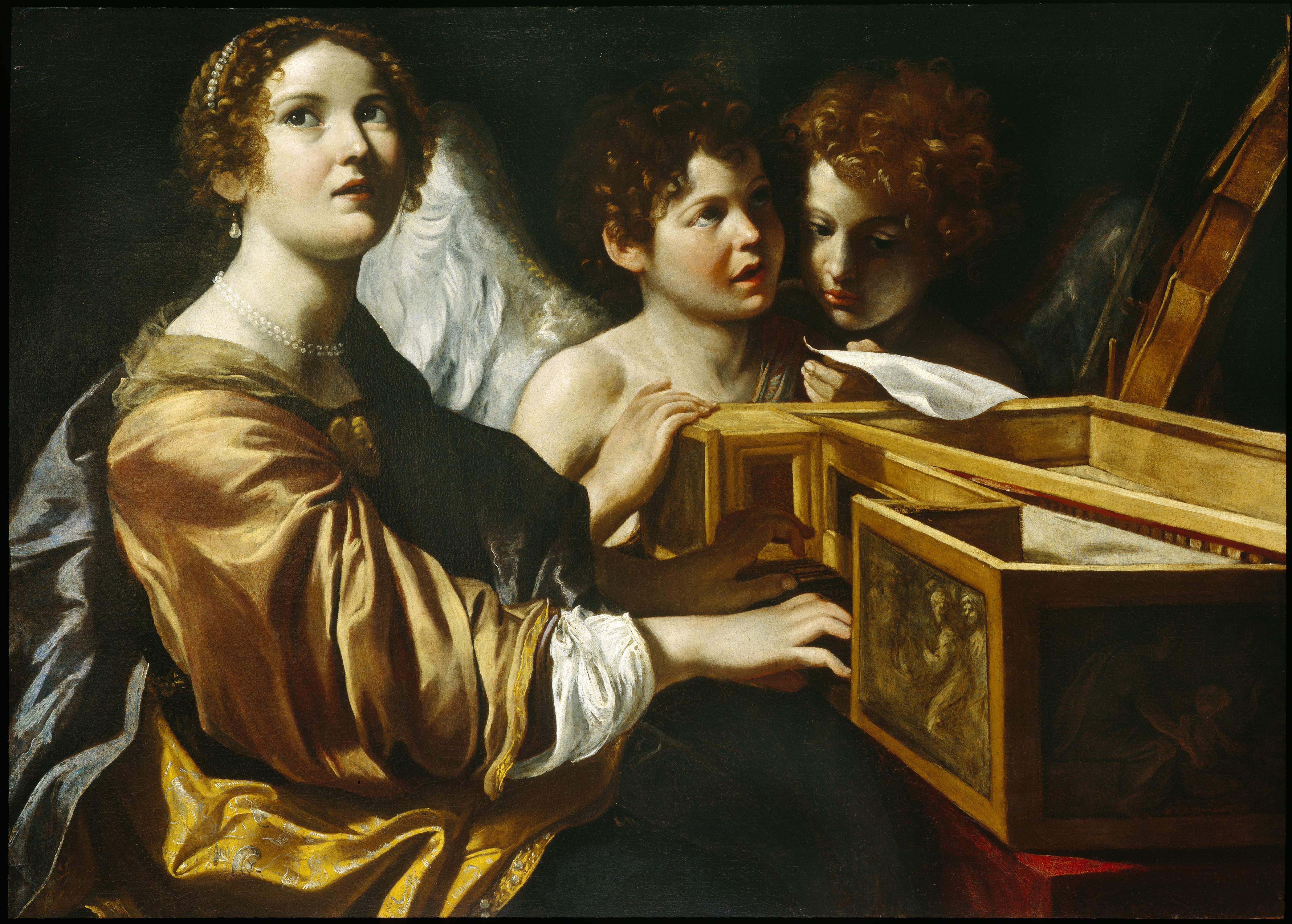Hôtel de Caumont Art Centre -Until 29 September 2019
A Culturespaces production in collaboration with The Solomon R. Guggenheim Foundation, New York
After holding an exhibition devoted to Marc Chagall, the Hôtel de Caumont Art Centre will be presenting (as of 1 May 2019) masterpieces from the Justin K. Thannhauser Collection, bequeathed in 1963 to the Solomon R. Guggenheim Foundation in New York.
For the first time, around fifty major works from this prestigious collection will be presented in Europe in an itinerant exhibition that began in the Guggenheim Bilbao Museum: paintings and sculptures by the masters of Impressionism and post- Impressionism, as well as the major figures of modern art, from Manet to Picasso, and Degas, Gauguin, Cézanne, Van Gogh, Braque, and Matisse.
Justin K. Thannhauser (1892–1976), a leading figure in the dissemination of European modern art, was the sponsor, friend, and promoter of innovative artists who transformed Western art at the end of the nineteenth century and the first half of the twentieth century. In his youth, he helped his father, Heinrich Thannhauser, to run the famous Moderne Galerie, which was founded in Munich in 1909. Father and son developed a remarkable programme of exhibitions that featured the work of French Impressionists and post-Impressionists, as well as contemporary German artists.
The gallery also held one of the first major retrospectives of Picasso’s oeuvre in 1913, and this helped to forge a long and close friendship between Justin Thannhauser and the artist.
In 1941, Justin Thannhauser moved to New York and soon established himself as an art dealer in the United States. As he had no successor, he bequeathed the major works in his collection to the Solomon R. Guggenheim Foundation in New York.
They have since become some of the most important works in this major museum, where they are displayed in a gallery that bears the name of their legatee.
This bequest considerably enriched the body of works by Cézanne in the New York museum, which until that point only had a single work by the artist:![Paul Cézanne, Man with Crossed Arms, ca. 1899. Oil on canvas, 36 1/4 x 28 5/8 inches (92 x 72.7 cm)]()
l'Homme aux bras croisés (Man with Crossed Arms, circa 1889). The collection of works by Cézanne owned by Thannhauser will be displayed at the Hôtel de Caumont, and includes the work
![Paul Cézanne, Bibémus, ca. 1894–95. Oil on canvas, 28 1/8 x 35 1/2 inches (71.4 x 90.1 cm)]()
Bibémus (Bibémus Quarries), which will return for the first time to Aix-in-Provence, where it was painted circa 1894–1895.
The exhibition brings together other emblematic works: major paintings by Picasso such as
![Pablo Picasso, Le Moulin de la Galette, Paris, ca. November 1900. Oil on canvas, 35 5/16 inches x 46 inches (89.7 x 116.8 cm)]()
Le Moulin de la Galette (1900), an exceptional loan from the Guggenheim Museum, as well as masterpieces by Van Gogh and Manet, which have been restored to their former splendour, thanks to a recent restoration campaign that was conducted specifically for this exhibition.
Details:
![Paul Cézanne, Bibémus, ca. 1894–95. Oil on canvas, 28 1/8 x 35 1/2 inches (71.4 x 90.1 cm)]() Bibémus (Bibémus Quarries), Cézanne Cézanne executed many landscapes that represented the abandoned stone quarries of Bibémus, near Mont Sainte-Victoire. The artist rented a cabin in this spot between 1895 and 1899 and he enjoyed working in the isolation and solitude of the quarries. The region’s bright colours, above all the red sandstone and the rocky terrain of the quarries with their wild shrubs, influenced the artist’s increasing ly geometric style. For the first time, this highly emblematic work representing the region, painted in the environs of Aix-en-Provence, will return to its native town after more than a century and a half. Bibémus (Bibémus Quarries), Cézanne Cézanne executed many landscapes that represented the abandoned stone quarries of Bibémus, near Mont Sainte-Victoire. The artist rented a cabin in this spot between 1895 and 1899 and he enjoyed working in the isolation and solitude of the quarries. The region’s bright colours, above all the red sandstone and the rocky terrain of the quarries with their wild shrubs, influenced the artist’s increasing ly geometric style. For the first time, this highly emblematic work representing the region, painted in the environs of Aix-en-Provence, will return to its native town after more than a century and a half.
![Image result for Devant la glace (Before the Mirror), Manet]() Édouard Manet (1832-1883), Devant la glace, 1876, oil on canva, 93 x 71,6 cm Solomon R. Guggenheim Museum, New York, Thannhauser Collection, don Justin K. Thannhauser, 78.2514.27 2 1 Édouard Manet (1832-1883), Devant la glace, 1876, oil on canva, 93 x 71,6 cm Solomon R. Guggenheim Museum, New York, Thannhauser Collection, don Justin K. Thannhauser, 78.2514.27 2 1 Devant la glace (Before the Mirror), Manet Édouard Manet painted this view of a woman seen from the back in 1876. The sitter was a famous courtesan, the mistress of the successor to the Dutch throne. This highly intimate painting represents her wearing a corset and the viewer’s eye is drawn to this item of clothing. Like his contemporaries, the Impressionists, Manet wished to depict very aspect of modern life, including the private world of sensual pleasures. The painter said: ‘The satin corset may be the nude of our era’. The picture was painted in a very modern style and the brushstrokes are free and expressive and lacking in details, creating the impression of a fleeting image.![Image result for Édouard Manet, Femme en robe à rayures,]() Édouard Manet, Femme en robe à rayures, vers 1877-1880, oil on canva, 175,5 x 84,3 cm Solomon R. Guggenheim Museum, New York, Thannhauser Collection, don Justin K. Thannhauser, 78.2514.28 Femme en robe à rayures (Woman in Striped Dress), Manet A young woman posed for Édouard Manet. Dressed fashionably, wearing a striped dress and holding a Japanese fan, she is looking beyond the con fines of the picture. Upon Manet’s death in 1883, this picture was unfinished in his studio. Based on photographs and scientific analyses, the work reveals that finishing touches were subsequently applied and that the painting was trimmed down its sides and along the top. The picture is also covered in a thick layer of varnish, which was probably applied to the surface to facilitate its sale at the time. The gradual removal of this layer of varnish revealed the original rapid brushstrokes that were so characteristic of Manet’s work. In addition, the inventories made at the time described the dress as violet, but before the restoration the dress’s stripes appeared to be almost green. The restored picture now has deep blue violet hues. The work will be exhibited for the first time in France since its restoration, which was completed in 2018. 3. FROM FATHER TO SON: THE THANNHAUSERS’ CENTRES OF INTEREST Capital of the liberal Weimar Republic, Berlin was a cultural centre in the 1920s and embraced unconventional art movements and lifestyles. The Thannhausers found it an ideal place in which to develop their business. Justin Thannhauser began in 1927 by organising a ‘special exhibition’ (Sonderausstellung), which the public and the critics greeted with enthusiasm. Amongst the two hundred and sixty-three works, the exhibition presented Mountains at Saint-Rémy by Vincent van Gogh. Painted during the artist’s convalescence, in 1889, it represents his subjective vision of the Provençal landscape through the use of thick and vibrant brushstrokes. In 1928, the Thannhauser gallery held a major retrospective of Gauguin’s oeuvre, with no less than 230 works by the artist, borrowed from major public and private collections. Justin’s presentations in the Berlin gallery in many ways reflected his father’s early interests in Munich. It was Heinrich who had organised a survey of Van Gogh’s oeuvre in 1908, in collaboration with the artist’s heirs. In 1910, the gallery in Munich had also held a major exhibition devoted to Gauguin, with twenty-six works by the artist, including Haere Mai. Painted on the distant island of Tahiti in 1891, this work represents an idealised and romantic vision of an unsullied paradise, which appealed to many Europeans at the turn of the century. Édouard Manet, Femme en robe à rayures, vers 1877-1880, oil on canva, 175,5 x 84,3 cm Solomon R. Guggenheim Museum, New York, Thannhauser Collection, don Justin K. Thannhauser, 78.2514.28 Femme en robe à rayures (Woman in Striped Dress), Manet A young woman posed for Édouard Manet. Dressed fashionably, wearing a striped dress and holding a Japanese fan, she is looking beyond the con fines of the picture. Upon Manet’s death in 1883, this picture was unfinished in his studio. Based on photographs and scientific analyses, the work reveals that finishing touches were subsequently applied and that the painting was trimmed down its sides and along the top. The picture is also covered in a thick layer of varnish, which was probably applied to the surface to facilitate its sale at the time. The gradual removal of this layer of varnish revealed the original rapid brushstrokes that were so characteristic of Manet’s work. In addition, the inventories made at the time described the dress as violet, but before the restoration the dress’s stripes appeared to be almost green. The restored picture now has deep blue violet hues. The work will be exhibited for the first time in France since its restoration, which was completed in 2018. 3. FROM FATHER TO SON: THE THANNHAUSERS’ CENTRES OF INTEREST Capital of the liberal Weimar Republic, Berlin was a cultural centre in the 1920s and embraced unconventional art movements and lifestyles. The Thannhausers found it an ideal place in which to develop their business. Justin Thannhauser began in 1927 by organising a ‘special exhibition’ (Sonderausstellung), which the public and the critics greeted with enthusiasm. Amongst the two hundred and sixty-three works, the exhibition presented Mountains at Saint-Rémy by Vincent van Gogh. Painted during the artist’s convalescence, in 1889, it represents his subjective vision of the Provençal landscape through the use of thick and vibrant brushstrokes. In 1928, the Thannhauser gallery held a major retrospective of Gauguin’s oeuvre, with no less than 230 works by the artist, borrowed from major public and private collections. Justin’s presentations in the Berlin gallery in many ways reflected his father’s early interests in Munich. It was Heinrich who had organised a survey of Van Gogh’s oeuvre in 1908, in collaboration with the artist’s heirs. In 1910, the gallery in Munich had also held a major exhibition devoted to Gauguin, with twenty-six works by the artist, including Haere Mai. Painted on the distant island of Tahiti in 1891, this work represents an idealised and romantic vision of an unsullied paradise, which appealed to many Europeans at the turn of the century. ![Image result for Van Gogh’s Le Viaduc (Roadway With Underpass)]() Vincent van Gogh (1853-1890), Le Viaduc, Asnières, 1887, oil on canvas, 32,7 x 41 cm Solomon R. Guggenheim Museum, New York, Thannhauser Collection, don Justin K. Thannhauser, 78.2514.17 Van Gogh’s Le Viaduc (Roadway With Underpass) represents a tunnel next to the Quai d’Asnières (now called Asnières-sur-Seine), a Parisian faubourg, where he often visited his friend, the artist Émile Bernard. A woman can be seen walking in the shade beneath the viaduct, drawn to the other side by a barely visible glimmer of light. Chimneys are visible above the railway bridge, surrounded by lush vegetation. During this time, van Gogh’s technique was greatly influenced by exhibitions of French artists linked to Impressionism and post-Impressionism. In 2018, the R. Guggenheim Foundation began to restore the work, whose original colours have been revealed. The work was exhibited in France in Thannhauser’s Parisian gallery at the end of the 1930s. In addition to the expansion to Berlin, in 1920 Justin Thannhauser had founded a gallery in Lucerne, with his cousin Siegfried Rosengart. 4. ON THE LOOKOUT FOR MODERN ART: JUSTIN THANNHAUSER AND HIS FRIENDS In 1913, when the Thannhausers lent works to the major exhibition of modern art in New York, better known as the Armory Show, the gallery in Munich held one of the first retrospectives of Picasso’s oeuvre in Germany. This exhibition, which presented works dating from 1901 to 1912, marked the beginning of a lasting friendship between the artist and Justin Thannhauser, who wrote the catalogue’s preface. Hence, while Heinrich Thannhauser consolidated his reputation in Munich, Justin developed his taste for modern art and demonstrated his support for a new generation of vanguard artists. Having assisted his father in the Moderne Galerie from around the age of seventeen, Justin continued his academic studies in Berlin, Florence, and Paris in the early 1910s. His philosophy and art history teachers and colleagues were prominent figures such as Henri Bergson, Adolph Goldschmidt, and Heinrich Wölfflin. Another acquaintance in Paris, the German painter Rudolf Levy, was a friend of Henri Matisse and the expatriates who frequented the Café du Dôme, in Montparnasse. It was probably through the so-called ‘Dômiers’ that Justin came to know the key Parisian art dealers, which strengthened his position within the network of American and European modern art galleries. The Matisse exhibition that Justin held in Berlin in 1930 was organised through his contacts in the Parisian art world. The show, prepared in collaboration with the artist and comprising two hundred and sixty-five paintings, sculptures, drawings, and engravings, was the most comprehensive retrospective of Matisse’s oeuvre in Germany up to that point. Vincent van Gogh (1853-1890), Le Viaduc, Asnières, 1887, oil on canvas, 32,7 x 41 cm Solomon R. Guggenheim Museum, New York, Thannhauser Collection, don Justin K. Thannhauser, 78.2514.17 Van Gogh’s Le Viaduc (Roadway With Underpass) represents a tunnel next to the Quai d’Asnières (now called Asnières-sur-Seine), a Parisian faubourg, where he often visited his friend, the artist Émile Bernard. A woman can be seen walking in the shade beneath the viaduct, drawn to the other side by a barely visible glimmer of light. Chimneys are visible above the railway bridge, surrounded by lush vegetation. During this time, van Gogh’s technique was greatly influenced by exhibitions of French artists linked to Impressionism and post-Impressionism. In 2018, the R. Guggenheim Foundation began to restore the work, whose original colours have been revealed. The work was exhibited in France in Thannhauser’s Parisian gallery at the end of the 1930s. In addition to the expansion to Berlin, in 1920 Justin Thannhauser had founded a gallery in Lucerne, with his cousin Siegfried Rosengart. 4. ON THE LOOKOUT FOR MODERN ART: JUSTIN THANNHAUSER AND HIS FRIENDS In 1913, when the Thannhausers lent works to the major exhibition of modern art in New York, better known as the Armory Show, the gallery in Munich held one of the first retrospectives of Picasso’s oeuvre in Germany. This exhibition, which presented works dating from 1901 to 1912, marked the beginning of a lasting friendship between the artist and Justin Thannhauser, who wrote the catalogue’s preface. Hence, while Heinrich Thannhauser consolidated his reputation in Munich, Justin developed his taste for modern art and demonstrated his support for a new generation of vanguard artists. Having assisted his father in the Moderne Galerie from around the age of seventeen, Justin continued his academic studies in Berlin, Florence, and Paris in the early 1910s. His philosophy and art history teachers and colleagues were prominent figures such as Henri Bergson, Adolph Goldschmidt, and Heinrich Wölfflin. Another acquaintance in Paris, the German painter Rudolf Levy, was a friend of Henri Matisse and the expatriates who frequented the Café du Dôme, in Montparnasse. It was probably through the so-called ‘Dômiers’ that Justin came to know the key Parisian art dealers, which strengthened his position within the network of American and European modern art galleries. The Matisse exhibition that Justin held in Berlin in 1930 was organised through his contacts in the Parisian art world. The show, prepared in collaboration with the artist and comprising two hundred and sixty-five paintings, sculptures, drawings, and engravings, was the most comprehensive retrospective of Matisse’s oeuvre in Germany up to that point. ![Pablo Picasso, Le Moulin de la Galette, Paris, ca. November 1900. Oil on canvas, 35 5/16 inches x 46 inches (89.7 x 116.8 cm)]() Le Moulin de la Galette, Paris, vers novembre 1900, oil on canva, 89,7 x 116,8 cm Solomon R. Guggenheim Museum, New York, Thannhauser Collection, don Justin K. Thannhauser, 78.2514.34 © Succession Picasso 2019 Le Moulin de la Galette, Picasso Picasso was nineteen when he painted Le Moulin de la Galette (1900). This was his most important work executed during his first stay in Paris—the artistic epicentre at that time—, where he had come to visit the Universal Exhibition . The work reflects the young Picasso’s fascination with the Bohemian atmosphere of Parisian nightlife. The strong influence of Henri Toulouse-Lautrec is evident in th e choice of subject matter and the composition. The figures on the left and right a re outside the frame, which reinforces the impression of instantaneity, giving it a p hotographic quality. Picasso’s style subsequently evolved from a more naturalistic p eriod to his melancholic Blue Period, followed by his Pink Period, and finally, working in conjunction with Georges Braque, he developed geometric lines and the deconstruc tion of forms, with the flat areas that characterised cubism. 5. CHAMPION OF THE AVANT-GARDE: THE MUNICH-BASED ARTISTS AND DER BLAUE REITER In the years preceding the Great War, the support that the Thannhausers gave to emerging artists—those based in Munich as well as abroad—played an important role in the proliferation of avant-garde styles. In 1909 and 1910, two exhibitions established the Neue Kunstlervereinigung Munchen (NKVM, or New Artists’ Association of Munich), which was openly opposed to conservatism in society and the contemporary German art market. The Thannhausers thus demonstrated their open-mindedness in providing a venue for such artists to exhibit their work, whereas the most conventional critics reacted to the paintings by Kandinsky, Münter, and Jawlensky by calling them ‘absurdities of incurable madmen’. In 1911–12, the first exhibition of Der Blaue Reiter (The Blue Rider) group confirmed the gallery’s foresight. Led by Wassily Kandinsky and Franz Marc, the group drew inspiration from sources as diverse as French Fauvism, Art Nouveau, Bavarian popular culture, and Russian folklore, and promoted the development of an art that was free of any figurative constraints, and which experimented with lyrical, symbolic, and spiritual expression. In addition to presenting paintings by the movement’s founding members, and in the cosmopolitan spirit that characterised the movement, the Blaue Reiter exhibition enabled the German public to discover works by French artists such as Robert Delaunay and Henri Rousseau (works by the latter presented posthumously). In 1914, the Thannhausers also mounted the first major exhibition in Germany devoted to Paul Klee, a Swiss artist who was also associated with the artists’ group Der Blaue Reiter. Kandinsky’s works are central to the Guggenheim, which has more than 150 of the artist’s works. Kandinsky left Russia, his native country, at the age of thirty, to study painting in Munich, one of Europe’s major cultural centres at the time. Solomon Guggenheim was determined to collect a wide range of the artist’s works in order to illustrate every period in his career. Le Moulin de la Galette, Paris, vers novembre 1900, oil on canva, 89,7 x 116,8 cm Solomon R. Guggenheim Museum, New York, Thannhauser Collection, don Justin K. Thannhauser, 78.2514.34 © Succession Picasso 2019 Le Moulin de la Galette, Picasso Picasso was nineteen when he painted Le Moulin de la Galette (1900). This was his most important work executed during his first stay in Paris—the artistic epicentre at that time—, where he had come to visit the Universal Exhibition . The work reflects the young Picasso’s fascination with the Bohemian atmosphere of Parisian nightlife. The strong influence of Henri Toulouse-Lautrec is evident in th e choice of subject matter and the composition. The figures on the left and right a re outside the frame, which reinforces the impression of instantaneity, giving it a p hotographic quality. Picasso’s style subsequently evolved from a more naturalistic p eriod to his melancholic Blue Period, followed by his Pink Period, and finally, working in conjunction with Georges Braque, he developed geometric lines and the deconstruc tion of forms, with the flat areas that characterised cubism. 5. CHAMPION OF THE AVANT-GARDE: THE MUNICH-BASED ARTISTS AND DER BLAUE REITER In the years preceding the Great War, the support that the Thannhausers gave to emerging artists—those based in Munich as well as abroad—played an important role in the proliferation of avant-garde styles. In 1909 and 1910, two exhibitions established the Neue Kunstlervereinigung Munchen (NKVM, or New Artists’ Association of Munich), which was openly opposed to conservatism in society and the contemporary German art market. The Thannhausers thus demonstrated their open-mindedness in providing a venue for such artists to exhibit their work, whereas the most conventional critics reacted to the paintings by Kandinsky, Münter, and Jawlensky by calling them ‘absurdities of incurable madmen’. In 1911–12, the first exhibition of Der Blaue Reiter (The Blue Rider) group confirmed the gallery’s foresight. Led by Wassily Kandinsky and Franz Marc, the group drew inspiration from sources as diverse as French Fauvism, Art Nouveau, Bavarian popular culture, and Russian folklore, and promoted the development of an art that was free of any figurative constraints, and which experimented with lyrical, symbolic, and spiritual expression. In addition to presenting paintings by the movement’s founding members, and in the cosmopolitan spirit that characterised the movement, the Blaue Reiter exhibition enabled the German public to discover works by French artists such as Robert Delaunay and Henri Rousseau (works by the latter presented posthumously). In 1914, the Thannhausers also mounted the first major exhibition in Germany devoted to Paul Klee, a Swiss artist who was also associated with the artists’ group Der Blaue Reiter. Kandinsky’s works are central to the Guggenheim, which has more than 150 of the artist’s works. Kandinsky left Russia, his native country, at the age of thirty, to study painting in Munich, one of Europe’s major cultural centres at the time. Solomon Guggenheim was determined to collect a wide range of the artist’s works in order to illustrate every period in his career. ![Image result for Blue Mountain (Der blaue Berg,]() Vassily Kandinsky (1866-1944), La Montagne bleue (Der blaue Berg), 1908-1909, oil on cardboard, 106 x 96,6 cm Solomon R. Guggenheim Museum, New York, Solomon R. Guggenheim Founding Collection, don, 41.505 The work, entitled Blue Mountain (Der blaue Berg, 1908–1909), in the Guggenheim Collection was exhibited in the Thannhauser Moderne Galerie in Munich during the first Der Blaue Reiter (The Blue Rider) exhibition. The motif of the rider in this picture symbolises the artist’s crusade against conventional aesthetic values and his desire to create a better utopian future via art’s capacity for transformation. In 1911, Thannhauser’s Moderne Galerie in Munich held the first German exhibition of Klee’s work. Vassily Kandinsky (1866-1944), La Montagne bleue (Der blaue Berg), 1908-1909, oil on cardboard, 106 x 96,6 cm Solomon R. Guggenheim Museum, New York, Solomon R. Guggenheim Founding Collection, don, 41.505 The work, entitled Blue Mountain (Der blaue Berg, 1908–1909), in the Guggenheim Collection was exhibited in the Thannhauser Moderne Galerie in Munich during the first Der Blaue Reiter (The Blue Rider) exhibition. The motif of the rider in this picture symbolises the artist’s crusade against conventional aesthetic values and his desire to create a better utopian future via art’s capacity for transformation. In 1911, Thannhauser’s Moderne Galerie in Munich held the first German exhibition of Klee’s work. ![Image result for Klee Flower Bed (Blumenbeet,]() Paul Klee (1879-1940), Parterre de fleurs (Blumenbeet), 1913, huile sur carton, 28,2 x 33,7 cm Solomon R. Guggenheim Museum, New York, succession de Karl Nierendorf, acquisition, 48.1172.109In Flower Bed (Blumenbeet, 1913), formerly on loan to the Thannhauser galleries, Klee concealed the naturalistic subject matter by using fragmented forms and the juxtaposition of dissonant colours, which was an approach used by the avant-garde movements that emerged in Europe during the years leading up to the First World War. Nevertheless, Klee managed to create a work that was impossible to categorise, and renewed his style, technique, and subject matter throughout his career.6. FROM PARIS TO NEW YORK: THE THANNHAUSERS’ ART SALONS In the 1930s, the international economic crisis and the rise of Nazism affected Thannhauser’s business. The gallery in Berlin closed in 1937, shortly after Justin moved with his family to Paris; they lived in a charming residence on rue Miromesnil, embellished with works by Monet, Degas, Picasso, and others. After the outbreak of the Second World War, the Thannhausers ultimately settled in New York in early 1941. Although some artworks that had remained in Germany were destroyed during an air raid, and the Parisian residence was pillaged during the German Occupation, a considerable number of other pieces in the Thannhauser collection survived. For instance, ninety works had been temporarily placed with the Stedelijk Museum in Amsterdam in 1938, and nine paintings had been part of a traveling exhibition in Latin America and North America since this same year, before all were returned to the Thannhausers in New York at the war’s end. Although he did not open a new gallery in New York, Justin Thannhauser continued to deal art privately, advise museums and galleries about art acquisitions, and help to organise major exhibitions. The house in which the Thannhausers lived from 1946, on East 67th Street, became a key gathering place for the city’s cultural circles. Those who visited the Thannhauser residence included prominent figures in the worlds of art, music, theatre, film, and photography such as Leonard Bernstein, Louise Bourgeois, Henri Cartier-Bresson, Marcel Duchamp, Jean Renoir, and Arturo Toscanini. The director of the Solomon R. Guggenheim Foundation, Thomas Messer, was, of course, also a guest, as was Peggy Guggenheim, Solomon Guggenheim’s niece who operated a museum-gallery in New York in the 1940s. Justin often travelled from the United States to Europe. He remained in contact with Picasso, who he invited to stay in what Thannhauser called his ‘little house’. 1. Pablo Picasso (1881-1973), Jardin à Vallauris, Vallauris, 10 juin 1953, oil and lacquer paint (?) sur toile, 19,1 x 26,9 cm Solomon R. Guggenheim Museum, New York, Thannhauser Collection, don Justin K. Thannhauser, 78.2514.64 © Succession Picasso 2019 2. Pablo Picasso (1881-1973), Nature morte : Fruits et pot, 22 janvier 1939, oil and lacquer paint (?) sur toile, 27,2 x 41 cm Solomon R. Guggenheim Museum, New York, Thannhauser Collection, don Hilde Thannhauser, 84.3231 © Succession Picasso 2019 2 1 Press kit - Hôtel de Caumont - Centre d’Art 19 Pablo Picasso (1881-1973), Paul Klee (1879-1940), Parterre de fleurs (Blumenbeet), 1913, huile sur carton, 28,2 x 33,7 cm Solomon R. Guggenheim Museum, New York, succession de Karl Nierendorf, acquisition, 48.1172.109In Flower Bed (Blumenbeet, 1913), formerly on loan to the Thannhauser galleries, Klee concealed the naturalistic subject matter by using fragmented forms and the juxtaposition of dissonant colours, which was an approach used by the avant-garde movements that emerged in Europe during the years leading up to the First World War. Nevertheless, Klee managed to create a work that was impossible to categorise, and renewed his style, technique, and subject matter throughout his career.6. FROM PARIS TO NEW YORK: THE THANNHAUSERS’ ART SALONS In the 1930s, the international economic crisis and the rise of Nazism affected Thannhauser’s business. The gallery in Berlin closed in 1937, shortly after Justin moved with his family to Paris; they lived in a charming residence on rue Miromesnil, embellished with works by Monet, Degas, Picasso, and others. After the outbreak of the Second World War, the Thannhausers ultimately settled in New York in early 1941. Although some artworks that had remained in Germany were destroyed during an air raid, and the Parisian residence was pillaged during the German Occupation, a considerable number of other pieces in the Thannhauser collection survived. For instance, ninety works had been temporarily placed with the Stedelijk Museum in Amsterdam in 1938, and nine paintings had been part of a traveling exhibition in Latin America and North America since this same year, before all were returned to the Thannhausers in New York at the war’s end. Although he did not open a new gallery in New York, Justin Thannhauser continued to deal art privately, advise museums and galleries about art acquisitions, and help to organise major exhibitions. The house in which the Thannhausers lived from 1946, on East 67th Street, became a key gathering place for the city’s cultural circles. Those who visited the Thannhauser residence included prominent figures in the worlds of art, music, theatre, film, and photography such as Leonard Bernstein, Louise Bourgeois, Henri Cartier-Bresson, Marcel Duchamp, Jean Renoir, and Arturo Toscanini. The director of the Solomon R. Guggenheim Foundation, Thomas Messer, was, of course, also a guest, as was Peggy Guggenheim, Solomon Guggenheim’s niece who operated a museum-gallery in New York in the 1940s. Justin often travelled from the United States to Europe. He remained in contact with Picasso, who he invited to stay in what Thannhauser called his ‘little house’. 1. Pablo Picasso (1881-1973), Jardin à Vallauris, Vallauris, 10 juin 1953, oil and lacquer paint (?) sur toile, 19,1 x 26,9 cm Solomon R. Guggenheim Museum, New York, Thannhauser Collection, don Justin K. Thannhauser, 78.2514.64 © Succession Picasso 2019 2. Pablo Picasso (1881-1973), Nature morte : Fruits et pot, 22 janvier 1939, oil and lacquer paint (?) sur toile, 27,2 x 41 cm Solomon R. Guggenheim Museum, New York, Thannhauser Collection, don Hilde Thannhauser, 84.3231 © Succession Picasso 2019 2 1 Press kit - Hôtel de Caumont - Centre d’Art 19 Pablo Picasso (1881-1973), ![Pablo Picasso, Lobster and Cat, January 11, 1965. Oil on canvas, 28 3/4 x 36 1/4 inches (73 x 92 cm)]() Le Homard et le chat, Mougins, 11 janvier 1965, oil and lacquer on canva 73 x 92,1 cm Solomon R. Guggenheim Museum, New York, Thannhauser Collection, legs Hilde Thannhauser, 91.3916 © Succession Picasso 2019 Le Homard et le chat, Mougins, 11 janvier 1965, oil and lacquer on canva 73 x 92,1 cm Solomon R. Guggenheim Museum, New York, Thannhauser Collection, legs Hilde Thannhauser, 91.3916 © Succession Picasso 2019
Le Homard et le chat (Lobster and Cat), Picasso After the death of his first wife, Käthe, in 1960, Justin Thannhauser married Hilde Breitwisch. On this occasion, Pablo Picasso gave the couple Le Homard et le chat (Lobster and Cat), which was executed in 1965. A dedication written in red and in French can be seen on the canvas: ‘Pour Justin Thannhauser, votre ami, Picasso’ (‘For Justin Thannhauser, your friend, Picasso’). The work, which has a slightly comic aspect, was a reference to eighteenth-century still lifes, while focusing on the picture’s theme, which represents a real confrontation. A cat with a dark brown coat on the right is in direct conflict with a bright blue lobster on the left of the picture. The palette, composition, and the expressively applied paint create an animated picture: the cat’s back is arched, his tail is straight, and his fur is standing up on end with his eyes wide open, while the lobster, seen from above, appears to be carefully balancing on his many spindly legs. 7. THANNHAUSER AND PICASSO: THE STORY OF A FRIENDSHIP With the Thannhauser bequest, more than thirty works by Picasso entered the Guggenheim collection. Covering a period of some sixty-five years, they attest to the friendship between the two men, Justin Thannhauser’s admiration for the artist’s work, and also his enterprising approach as a dealer and collector who was continually able to embrace new styles over the decades. In this room, three portraits of women correspond with very different periods in Picasso’s oeuvre. Inspired by muses and companions who accompanied the development of his painting (Fernande Olivier, Olga Khokhlova, and Marie-Thérèse Walter), they show the evolution of Picasso’s pictorial style as he liberally drew inspiration from sources as varied as ancient and modern art. Hence, while classical statuary from antiquity inspired the sculptural aspects of ![Image result for Woman in an Armchair (1922), , Picasso Picasso]() Woman in an Armchair (1922), Woman in an Armchair (1922), ![Image result for Fernande with a Black Mantilla (circa 1905)]() Pablo Picasso (1881-1973), Fernande à la mantille noire, Paris, vers 1905, oil on canva, 100 x 81 cm Solomon R. Guggenheim Museum, New York, Thannhauser Collection, legs Hilde Thannhauser, 91.3914 © Succession Picasso 2019 Fernande with a Black Mantilla (circa 1905), painted more than fifteen years earlier, attests to the influence of Fauvism: despite the almost monochrome palette, the colour is unconstrained by drawing. Woman With Yellow Hair, executed in 1931, reveals a renewed interest in surface treatment and colour. In this portrait of Picasso’s then-muse, Walter, the curvilinear contours and flat areas of bright colour signal a radical change in Picasso’s practice. Pablo Picasso (1881-1973), Fernande à la mantille noire, Paris, vers 1905, oil on canva, 100 x 81 cm Solomon R. Guggenheim Museum, New York, Thannhauser Collection, legs Hilde Thannhauser, 91.3914 © Succession Picasso 2019 Fernande with a Black Mantilla (circa 1905), painted more than fifteen years earlier, attests to the influence of Fauvism: despite the almost monochrome palette, the colour is unconstrained by drawing. Woman With Yellow Hair, executed in 1931, reveals a renewed interest in surface treatment and colour. In this portrait of Picasso’s then-muse, Walter, the curvilinear contours and flat areas of bright colour signal a radical change in Picasso’s practice.
|










